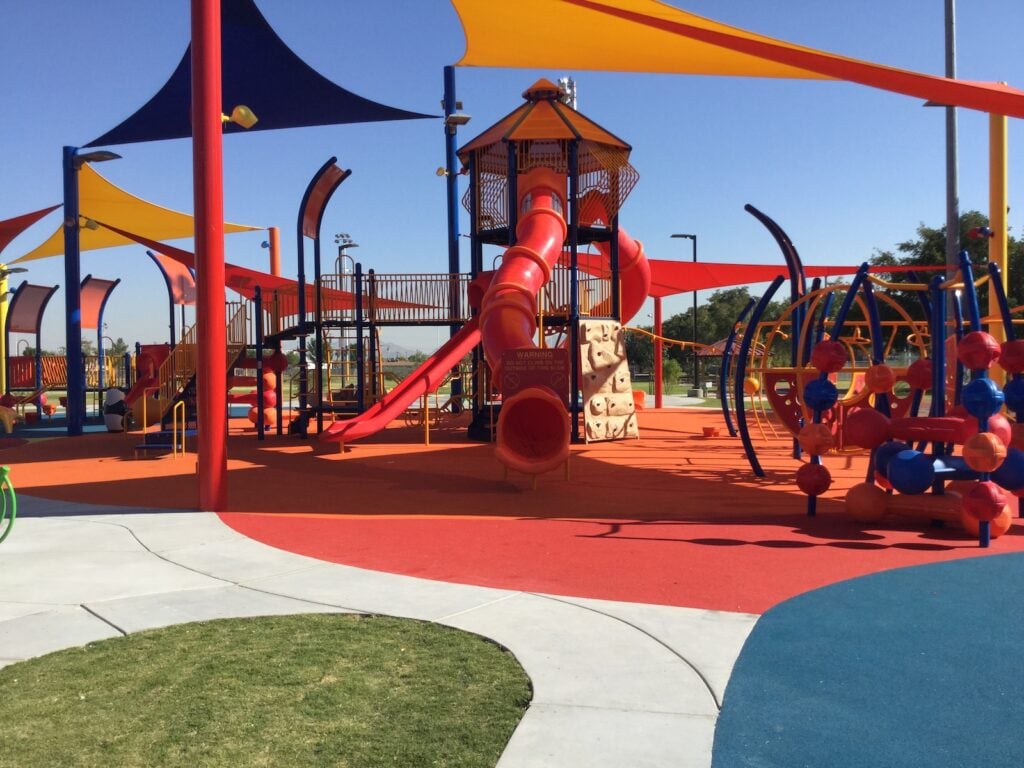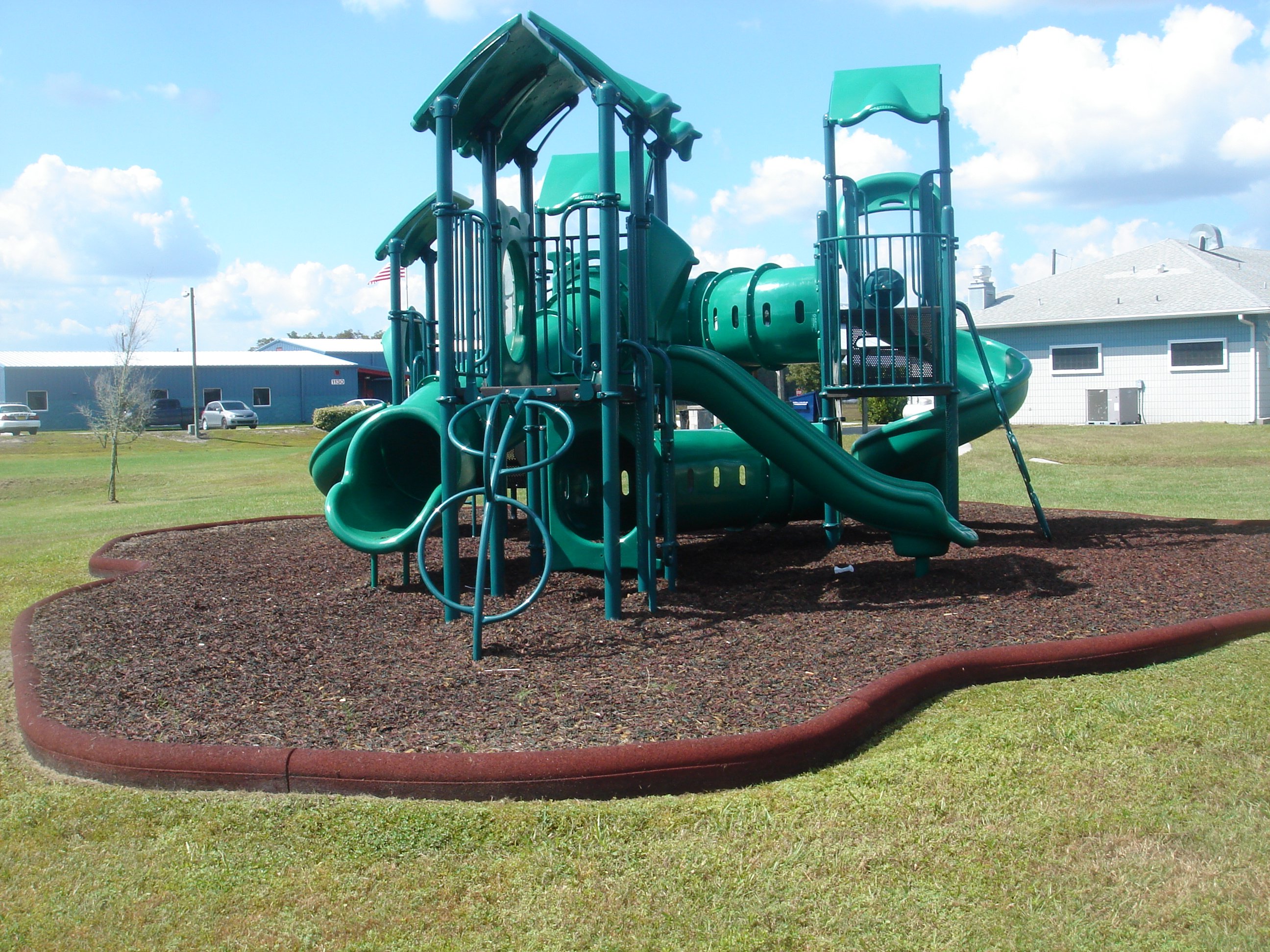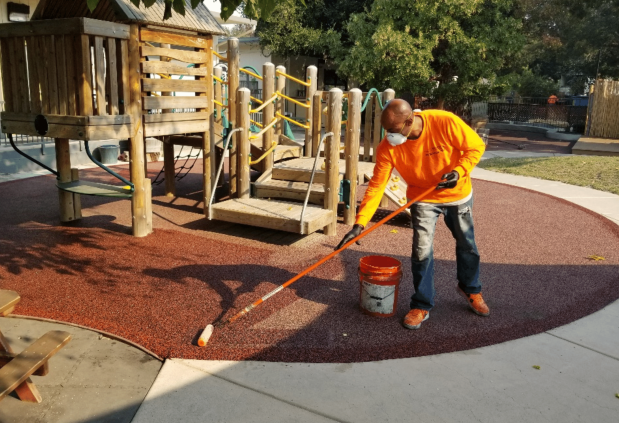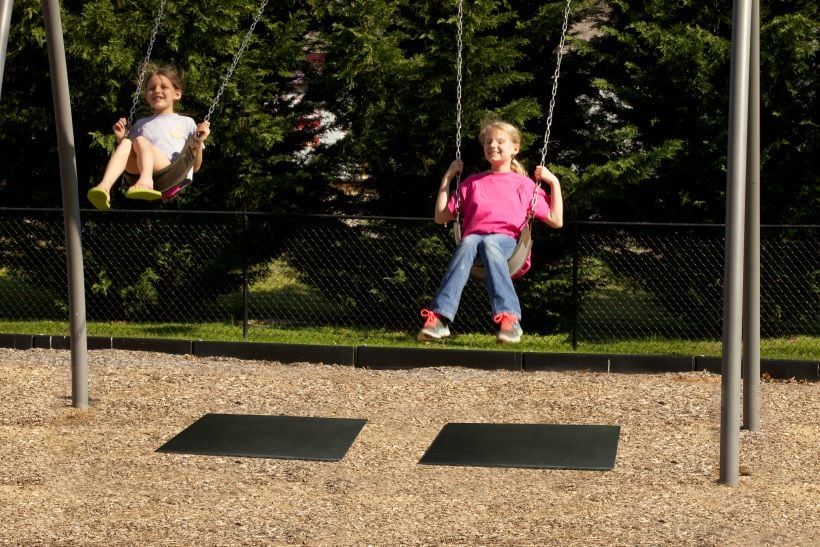Every child deserves to have fun, regardless of disabilities or restrictions. The Americans with Disabilities Act (ADA) has created guidelines that ensure that playgrounds offer inclusion, accessibility, and socialization for all. Learn more about ADA standards for surfacing materials and access routes below!
The Importance of ADA Accessibility
In 2009, The Census Bureau estimated that 1-in-7 families are affected by disabilities. A key factor in establishing your playground as an inclusive environment to foster community is ensuring that it is accessible to children, parents, and caregivers with varying physical or mental conditions. Luckily, The Department of Justice has created clearly-defined ADA standards for public facilities that establish standards for accessible routes, playground surfacing, access and transfer spaces, ground-level activities, and more.
Requirements differ between playgrounds that are government-owned, privately-owned, or owned by other entities. A few general requirements by the ADA regarding surfacing are:
- 1. Utilize a surface that is firm, stable, and slip-resistant.
- 2. Surfaces must accommodate people using wheelchairs, walkers, and other forms of mobility aids.
3. They must ensure that the surfacing on, leading up to, and surrounding the playground must sufficiently cushion potential falls.
How does this affect features and playground surfacing?
ADA standards require that for each inaccessible interactive feature on a playground, there must be a specified number of accessible features. It is also important to note that these interactive features must be integrated into the playground, rather than a distinct ‘handicapped area’ which restricts socialization and inclusion. According to the United States Access Board, “Inaccessible surfaces can pose barriers for children with disabilities who may use canes, crutches, walkers or wheelchairs from ambulating through the play area. Pushing a wheelchair over loose gravel or sand requires tremendous physical effort. When so much effort is exerted, little to no energy is left for play.”
Totturf’s ADA Accessible Playground Surfacing Products
The goal with any ADA accessible playground surface is to create a unitary flat surface that allows for the ease of movement by wheelchairs and crutches. To develop a unitary surface, you can use poured in place rubber, bonded rubber, synthetic playground turf, and engineered wood fiber. Each surface has its own strengths and all are perfect for your next playground project. Below we expand on each type of ADA accessible surfacing.
Poured in Place Rubber Surfacing: Our PIP playground surfacing product is the most accessible and meets all safety guidelines. The surface is flat, which makes it easy to traverse with a wheelchair, cane, or walker. It also can be installed with ramps to allow any child to reach any part of the playground.
Synthetic Playground Turf: Our artificial turf (synthetic grass) product is completely accessible and meets all ADA requirements. It’s easily traversed with a wheelchair, walker, and cane, and it meets the fall safety requirements for most playground equipment. It needs more maintenance than our poured in place surfacing product, but it aesthetically looks more natural.
Bonded Rubber Surfacing: Bonded rubber is poured on-site like Poured rubber, but consists of shredded as opposed to granular rubber pieces. It provides the same seamless surface and can be used in similar applications as Poured Rubber. If installed correctly, it provides a solid, unitary, flat surface that is perfect for children of all abilities! Our clients use it for playgrounds along with trail systems.
Engineered Wood Fiber Surfacing: Made of natural wood that is engineered to” knit together” and form a surface soft enough to cushion falls, yet firm enough for wheelchairs. Recommended for use with our drainage system to avoid puddling, and ensure the surface is ready for play for children of all abilities. Easy to install and maintain, engineered wood fiber is a popular choice for projects with initial budget constraints.



